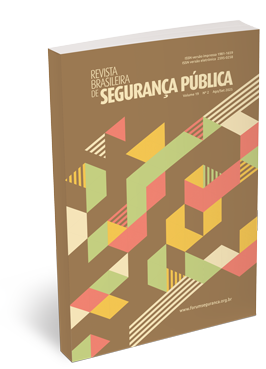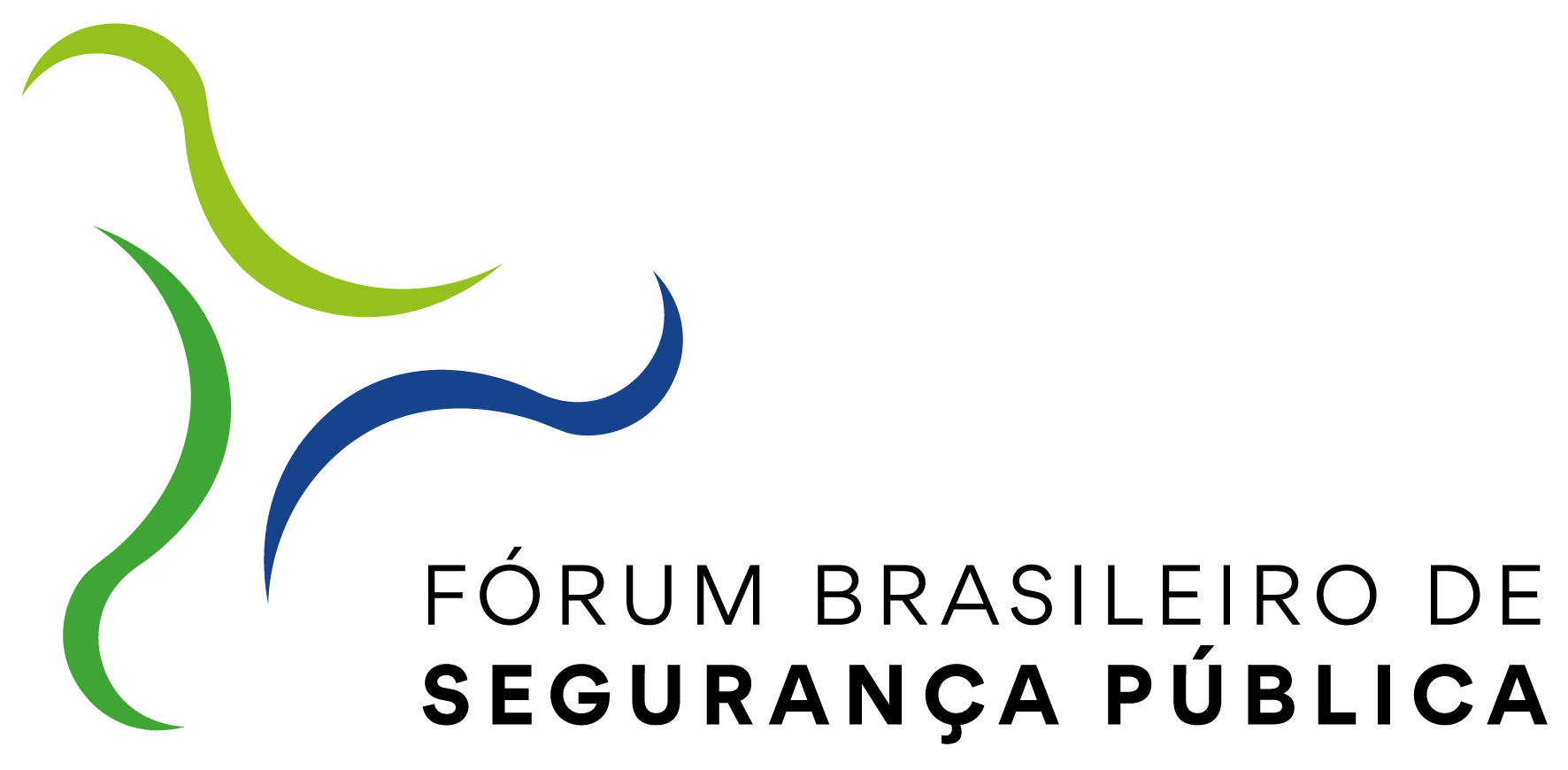DRYING ICE
presenting the dataset on drug seizures in the Brazilian South
DOI:
https://doi.org/10.31060/rbsp.2025.v19.n2.2034Keywords:
War on drugs, Public policies, Indexes, Public health, SecurityAbstract
The so-called war on drugs is one of the main public security policies and strategies in force in Brazil. Although the current repressive model burdens scarce resources in essential areas such as education and health, its systematic evaluation is hindered by the lack of tangible indicators of success. Increases in seizures are often interpreted as triumphs of the government's strategy, but they may actually reflect the failure of the war on drugs strategy, reflected in an increase in the supply and availability of drugs. This study proposes the use of seizure data to analyze the landscape of the work of the police in four Brazilian states in their drug suppression actions. In this context, the adoption of final and intermediate indicators to evaluate the implementation of the Drug Law. To this end, we constructed the Microdata Dataset of Drug Seizures in the South of Brazil, gathering information on seizures in the states of Mato Grosso do Sul, Paraná, Rio Grande do Sul, and Santa Catarina. We analyzed 775 thousand drug seizures in this region, comparing approaches between different police forces. This study contributes to the discussion on the war on drugs, demonstrating the need for reassessment of its approach and the adoption of metrics more aligned with public health and security objectives. The empirical analysis sheds light on the complexity of the issue and provides insights to inform more effective policies in the future.
Downloads
References
MODESTO FILHO, Heládio Marcelino;Beatriz Abdallah CHAIBUBApreensão de drogas pela polícia militar do estado de goiás nos últimos anos. ABREU, Allan de. A metástase. Revista Piauí, ed. 150, mar. 2019.
BIDERMAN, Ciro; MELLO, João de; LIMA, Renato de; SCHNEIDER, Alexandre. Pax Monopolista and Crime: The Case of the Emergence of the Primeiro Comando da Capital in São Paulo. Journal of Quantitative Criminology, v. 35, n. 3, p. 573-605, 2019. DOI: https://doi.org/10.1007/s10940-018-9393-x
BLUME, Laura Ross. The old rules no longer apply: explaining narco-assassinations of mexican politicians. Journal of Politics in Latin America, v. 9, p. 59-90, 2017. DOI: https://doi.org/10.1177/1866802X1700900103
BRASIL. LEI DE RESPONSABILIDADE FISCAL. https://www.planalto.gov.br/ccivil_03/LEIS/LCP/Lcp101.htm . 2000.
BRASIL. LEI DE DROGAS. https://www.planalto.gov.br/ccivil_03/_Ato2004-2006/2006/Lei/L11343.htm . 2006.
BRASIL. Lei de Acesso à Informação. https://www.planalto.gov.br/ccivil_03/_ato2011-2014/2011/lei/l12527.htm . 2011.
BUCHER, Richard; OLIVEIRA, Sandra. O discurso do “combate às drogas” e suas ideologias. Revista de Saúde Pública, São Paulo, v. 28, n. 2, p. 137-145, 1994. DOI: https://doi.org/10.1590/S0034-89101994000200008
CAMPOS, Marcelo da Silveira. Growingly empty, growingly full: drug policy reform in Brazil. One Pages Series, n. 11, 2020.
CAMPOS, Marcelo da Silveira; AZEVEDO, Rodrigo Ghiringhelli de. A ambiguidade das escolhas: política criminal no Brasil de 1989 a 2016. Revista de Sociologia e Política, Curitiba, v. 28, 2020. DOI: https://doi.org/10.1590/1678-987320287302
CAPARROZ, Michelle de Oliveira Trindade; MÈRCHER, Leonardo. Narcotráfico na fronteira entre Brasil e Paraguai. p. 1-23, 2016.
CAULKINS, Jonathan ; REUTER, Peter. What price data tell us about drug markets. Journal of Drug Issues, v. 28, n. 3, p. 593-612, 1998. DOI: https://doi.org/10.1177/002204269802800302
CERQUEIRA, Daniel Ricardo de Castro. Custo de bem-estar social dos homicídios relacionados ao proibicionismo das drogas no Brasil. Brasília: Ipea, 2023.
CESEC – Centro de Estudos de Segurança e Cidadania. Calculadora da Proibição – Drogas – Quanto Custa Proibir. CESeC, [s.d.]. Acesso em: 31 jan. 2024.
CRUZ, Thays Alves do Prado. Plano de dados abertos da Polícia Federal: apreensão de drogas. 2021. 65 f. Trabalho de Conclusão de Curso (Bacharelado em Estatística) – Departamento de Estatística, Universidade de Brasília, Brasília, 2021.
DAUDELIN, Jean; RATTON, José Luiz. Mercados de drogas, guerra e paz no Recife. Tempo Social, São Paulo, v. 29, n. 2, p. 115-134, 2017. DOI: https://doi.org/10.11606/0103-2070.ts.2017.125670
CARVALHO SILVA, Leonardo de; LANGEANI, Bruno. Low impact, wrong direction: why São Paulo State Drug Policy is inefficient and ineffective. Journal of Illicit Economies and Development, v. 1, n. 2, p. 204-219, 2019. DOI: https://doi.org/10.31389/jied.35
DRUG POLICY ALLIANCE. Rethinking the “Drug Dealer”. New York: Drug Police Alliance, 2019. Disponível em: https://www.drugsandalcohol.ie/31473/1/dpa-rethinking-the-drug-dealer.pdf. Acesso em: 31 jan. 2024.
FANTÁSTICO. Comunidades terapêuticas recebem milhões do poder público para acolher dependentes, mas submetem internos a castigos. Portal do Fantástico, Notícia, 19 jun. 2022.
FELTRAN, Gabriel. Irmãos: uma história do PCC. São Paulo: Companhia das Letras, 2018.
FELTRAN, Gabriel; LERO, Cecília; CIPRIANI, Marcelli; MALDONADO, Janaina; RODRIGUES, Fernando de Jesus; SILVA, Luiz Eduardo Lopes; FARIAS, Nido. Variations in homicide rates in Brazil: an explanation centred on criminal group conflicts. Dilemas: Revista de Estudos de Conflito e Controle Social, Rio de Janeiro, v. 15, n. esp. 4, p. 349-386, 2022. DOI: https://doi.org/10.4322/dilemas.v15esp4.52509
G1 BA; TV BAHIA. Ministério público apura denúncias de internos que relataram rotina de castigos em comunidade terapêutica na Bahia. Portal do G1, Bahia, 21 jun. 2022.
INSTITUTO SOU DA PAZ. Prisões em flagrante na cidade de São Paulo. Relatório da Pesquisa. São Paulo: Instituto Sou da Paz, 2012.
KOPITTKE, Alberto Liebling. Segurança pública baseada em evidências: a revolução das evidências na prevenção à violência no Brasil e no mundo. 2019. 414 f. Tese (Doutorado em Políticas Públicas) – Universidade Federal do Rio Grande do Sul, Porto Alegre, 2019.
LEMGRUBER, Julita (Coord.). Um tiro no pé: impactos da proibição das drogas no orçamento do sistema de justiça criminal do Rio de Janeiro e São Paulo. Rio de Janeiro: CESeC, 2021.
LEMGRUBER, Julita; FERNANDES, Marcia. Tráfico de drogas na cidade do Rio de Janeiro: prisão provisória e direito de defesa. Boletim Segurança e Cidadania, Rio de Janeiro, n. 17, 2015.
LESSING, Benjamin. Counterproductive punishment: how prison gangs undermine state authority. Rationality and Society, v. 29, n. 3, p. 257-297, 2017. DOI: https://doi.org/10.1177/1043463117701132
LESSING, Benjamin. Conceptualizing Criminal Governance. Perspectives on Politics, v. 19, n. 3, p. 854-873, 2021. DOI: https://doi.org/10.1017/S1537592720001243. DOI: https://doi.org/10.1017/S1537592720001243
LEY, Sandra. Electoral accountability in the midst of criminal violence: evidence from Mexico. Latin American Politics and Society, v. 59, n. 1, p. 3-27, 2017. DOI: https://doi.org/10.1111/laps.12008
MACHADO, Maíra Rocha; AMARAL, Mariana Celano de Souza; BARROS, Matheus de; MELO, Ana Clara Klink de. Incarcerating at any cost: drug trafficking and imprisonment in brazilian court reasoning. Journal of Illicit Economies and Development, v. 1, n. 2, p. 226-237, 2019. DOI: https://doi.org/10.31389/jied.37
MICHENER, Gregory; NICHTER, Simeon. Local compliance with national transparency legislation. Government Information Quarterly, v. 39, n. 1, 2022. DOI: https://doi.org/10.1016/j.giq.2021.101659
MONTEIRO, Joana; CABALLERO, Bárbara. Crimes e Violência. In: SHIKIDA, Claudio; MONASTERIO, Leonardo; NERY, Pedro Fernando (Eds.). Guia Brasileiro de Análise de Dados: armadilhas e soluções. Brasília: Enap, 2021, p. 127-169.
MPSP – Ministério Público do Estado de São Paulo. Operação do MPSP em Cajamar resulta em prisões por maus-tratos em comunidade terapêutica. Portal do MPMT – Ministério Público do Estado do Mato Grosso, 22 fev. 2023.
OLIVEIRA, Mariana. Após pesquisa sobre uso de drogas ser censurada, AGU ouve Fiocruz e Ministério da Justiça. Portal do G1, Política, Notícia, Brasília, 3 jun. 2019. Disponível em: https://g1.globo.com/politica/noticia/2019/06/03/apos-pesquisa-sobre-uso-de-drogas-ser-censurada-agu-ouve-fiocruz-e-ministerio-da-justica.ghtml. Acesso em: 2 ago. 2025.
PAES MANSO, Bruno. A república das milícias: dos esquadrões da morte à era Bolsonaro. São Paulo: Todavia, 2020.
REBELO, Irla Bocianoski; STEMPLIUK, Vladimir de Andrade. Observatório Brasileiro de Informações sobre Drogas (Obid): tecnologia para construção de portais. Inclusão Social, Brasília, v. 2, n. 1, p. 110-117, 2006.
RIOS, Viridiana. How government coordination controlled organized crime: the case of Mexico’s cocaine markets. Journal of Conflict Resolution, v. 59, n. 8, p. 1433-1454, 2015. DOI: https://doi.org/10.1177/0022002715587052
SNYDER, Richard; DURAN-MARTINEZ, Angelica. Does illegality breed violence? Drug trafficking and state-sponsored protection rackets. Crime, Law and Social Change, v. 52, p. 253-273, 2009. DOI: https://doi.org/10.1007/s10611-009-9195-z
SOARES, Rafael. Milicianos: como agentes formados para combater o crime passaram a matar a serviço dele. São Paulo: Objetiva, 2023.
TREJO, Guillermo; LEY, Sandra. Votes, drugs, and violence: the political logic of criminal wars in Mexico. Cambridge Studies in Comparative Politics: 2020. DOI: https://doi.org/10.1017/9781108894807
WAINWRIGHT, Tom. Narconomics: how to run a drug cartel. Ebury Press, 2016.
ZACCONE, Orlando. Acionistas do nada: quem são os traficantes de drogas. Rio de Janeiro: Revan, 2007.
ZALUAR, Alba; BARCELLOS, Christovam. Mortes Prematuras e conflito armado pelo domínio das favelas no Rio de Janeiro. Revista Brasileira de Ciências Sociais, São Paulo, v. 28, n. 81, p. 17-31, 2013. DOI: https://doi.org/10.1590/S0102-69092013000100002
Downloads
Published
How to Cite
Issue
Section
License
Copyright (c) 2025 Revista Brasileira de Segurança Pública

This work is licensed under a Creative Commons Attribution 4.0 International License.
Licensing
The Brazilian Journal of Public Security uses the Creative Commons License as a form of licensing for its published works. The license used follows the CC BY 4.0 - Attribution 4.0 International model.
To see the permitted rights please go to the full licence or to our Copyright and Licensing page.



